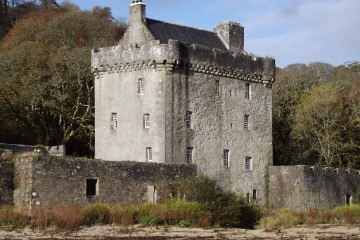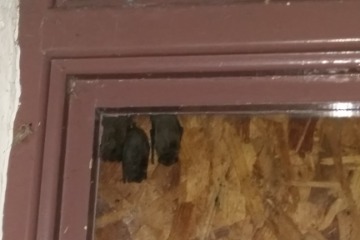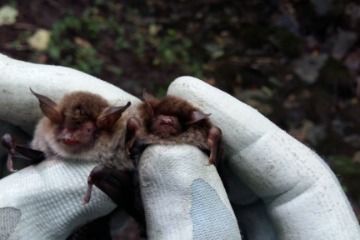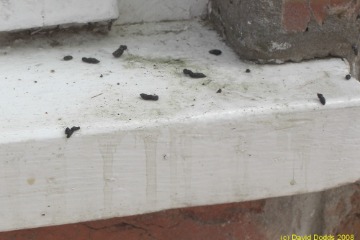Are there bats in your home?
Are there bats in your home?
Having bats in your house's roof-space or another outbuilding is nothing to be concerned about, they are seldom seen unless they emerge at dusk. However, if you are concerned about bats in or around your home, here are some indicators.
Bats in Scotland
Scotland is home to a variety of bat species, all of which are very small, weighing just a few grammes. With the reduction and destruction of a lot of natural habitats of bats, they have adapted to using buildings for breeding and roosting. People often tell us they've looked in the attic and there aren't any bats, but many roosts are in tiny spaces and voids. Bats can climb through very small gaps to roost in many different places, including:
- lofts and attic spaces
- cellars
- under lead flashing
- window sills
- between roof tiles
- above soffits
- between fascias
- in cavity walls
- under gables
- in eaves.
Unlike rodent infestations, bats are largely harmless and, unless in very large numbers they do little damage to your property. They don't build nests and they don't gnaw through cables, wood, wires, or insulation like mice or rats.
Top 3 Signs that Bats are in Your Property
It is often very difficult to identify bats in your home or where they are roosting. You may not actually see any signs of bats at all and often homeowners are completely unaware of bats being present, particularly during the winter months when bats hibernate. In summer when they are most active at night, they can be seen at dusk or into the evening and will often return seasonally to the same roosting location, so keep an eye out for these signs at this time of year.
Bat Droppings
One sure way to detect bats is through their droppings. Bat droppings look a lot like mice droppings both in size and colour,with bat droppings easily crumbling under pressure (unlike mice/rat droppings). You may see them building up on windows, walls, sills, around gable ends, around chimneys, and under the ridge of the roof void if a colony is roosting there.
Bat Chattering
Whilst bats tend to be extremely quiet as they communicate largely through sonar that we can't hear, you may sometimes hear a chattering noise that they make, which is like a high pitched squeaking and scratching sound. This can be heard most frequently at dusk as they tend to chatter before they fly out to feed. They are particularly vocal at dawn in summer months when the babies call out to their mothers as they return from hunting insects throughout the night.
Look for Emerging Bats
A further way to identify bats in your property is to carry out an emergence survey. Watch your house or building at dusk in the summer months to see if any bats emerge when they leave their roost in the evening to feed. Bats may also be visible on the ridge beams inside the roof void where they rest before flying off.
Do You Need a Professional Bat Survey?
For every roost that is easily identified there are many more which are much harder to find. Each colony may use dozens or even hundreds of roosts. A maternity roost with hundreds of females rearing young is easy to find, but the tiny crevice used by a single male pipistrelle bat in the summer is much harder to spot. Some bat species don't emerge from their roosts until it is completely dark and these roosts cannot usually be found without specialist equipment and knowledge. If you need to know if bats are present before carrying out work that may affect them the team of bat specialist ecologists at David Dodds Associates are always happy to give any advice you need.








